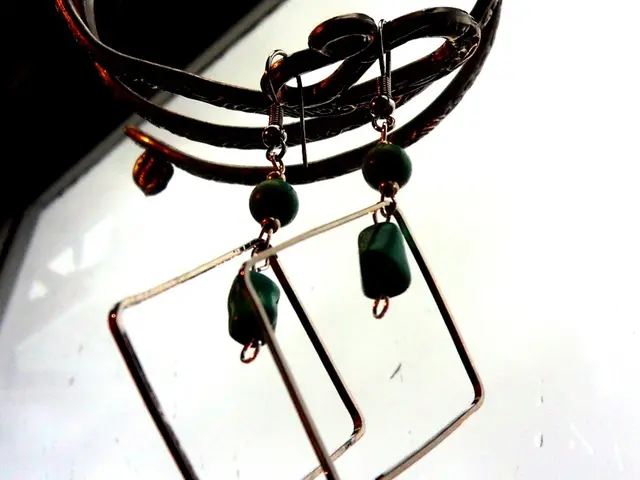Expectations during hip replacement recovery period: Insights provided
Fresh and Approachable Guide to Hip Replacement Recovery
Hip replacement surgeries, whether partial or total, can take a diverse amount of time to recover from, depending on a myriad of factors. Most folks can get back to light activities in 3 to 6 weeks, but it's essential to consider certain restrictions in the initial stages of recovery.
Before the Big Day
Preparation plays a crucial role in a successful hip replacement, and it should commence weeks, if not months, prior to the procedure. The American Academy of Orthopedic Surgeons recommends getting ready by:
- Discussing the surgery with your medical team, seeking advice, and understanding what to expect.
- Strengthening your legs, core, and upper body through exercises recommended by your physician.
- Maintaining a moderate weight if possible to reduce the risk of complications during surgery.
- Quitting smoking or limiting it as much as possible, as it can delay healing and increase the risk of complications.
- Arranging at-home assistance for daily routines after the return from the hospital.
- Preparing meals in advance to make life easier post-surgery.
- Making your home accessible with items like grab bars, raised toilet seats, and walkers or crutches readily available.
The Day of the Surgery and the First Few Days
Typically, individuals stay in the hospital for 1 to 2 days after the procedure, although some may head home the same day.
In the days following surgery, medical professionals may provide pain relievers, such as opioids, local anesthetics, NSAIDs, or acetaminophen. The stitches or staples may need to be left in for about 2 weeks, requiring wound care at home.
Physical therapists will help patients get moving as soon as possible. This will likely include taking short walks, which may initially feel uncomfortable or painful, and demonstrating exercises and techniques to strengthen the leg and avoid injuring the new hip.
Returning Home
Individuals may require assistance with daily tasks for several weeks after returning home, or they may need to stay in a rehabilitation facility. Pain and discomfort can persist for a few weeks, so continue taking prescribed medications accordingly.
A physical therapist may advise on exercises and Physical Therapy sessions, either in-person or at home, that will speed recovery and improve flexibility and strength in the new joint.
The First Few Weeks
By day 10 to 14, stitches should be removed, and pain and swelling may begin to subside. Activity levels will vary, but some people may find it easier to move around. Those who previously used canes or walkers may still require them during this time.
As more time passes, many people can generally resume light activities of daily living. Returning to work is possible after 6 weeks, while resuming sexual activity may be appropriate after 6 to 8 weeks.
Physical therapy should be continued for at least 2 months following the surgery. Discuss with your doctor when it's safe to engage in additional exercises like swimming and walking.
Beyond 3 Months
By the third month, individuals may resume daily activities, but consult your doctor about when it's appropriate to reduce or stop physical therapy. Low-impact sports can be resumed at this stage.
Recovery can vary, so it's crucial to stay in regular contact with your physician to evaluate your progress and discuss the most beneficial types of physical therapy for you.
Tips to Enhance Recovery
Some strategies can aid recovery, such as:
- Adhering to Physical Therapy exercises and instructions.
- Participating in moderate exercises like daily walking.
- Sitting in a reclining position.
- Using cold compresses to reduce swelling.
- Taking prescribed medications as directed.
- Utilizing walking aids if necessary.
Older vs. Younger Patients
While experts traditionally did not recommend hip replacements for individuals under 20 due to unfavorable outcomes, cases involving certain conditions like osteonecrosis of the femoral head can have favorable outcomes.
On the other hand, older adults may experience more complications as they are more likely to have underlying health issues like heart disease, clogged arteries, and high blood pressure. Take time to discuss these conditions with your medical team and seek any necessary treatments.
Hip Resurfacing Recovery
In hip resurfacing, the femoral head is capped with a smooth metal cover, whereas the damaged cartilage and bone inside the socket are replaced with a metal shell. Recovery following hip resurfacing surgery is generally similar to traditional hip replacement, although individuals may need to use a walking aid for the first few days or weeks.
Hip Replacement Outlook
Individuals who undergo hip replacement surgeries can expect a reduced amount of pain, improved mobility, a better quality of life, and improvements in daily activities. However, there may be long-term effects like numbness, pain, or stiffness around the incision site.
Certain aspects of life may also be affected, such as:
- Metal detectors, which may detect hip replacements.
- High-impact sports, which may increase the risk of falls, injuries, and further surgery.
- Dental procedures, during which antibiotics may be necessary.
- Sexual activity, which may require precautions like safe positions and supportive cushions.
• follow physical therapy exercises as a physical therapist instructs• try other gentle exercises, such as daily walking• sit in a reclining position• use a cold compress to reduce swelling• take any prescription medications as a doctor instructs• use walking aids, such as crutches, if necessary
Frequently Asked Questions
How long will it take to walk again after a hip replacement?
Numerous individuals can walk short distances, with assistance, on the same day as the surgery. Over the first few weeks, they should be able to walk longer distances.
How long does bed rest last after hip replacement surgery?
Patients should begin walking as soon as possible after hip replacement surgery, so they don't need extended bed rest. Rest and gentle movements are crucial, but bed rest is not necessary.
What age limit is there for hip replacements?
• sitting still for long periods• crossing the legs at the knee• bending the hip more than 90 degrees• bending down to touch the feet or ankles• sitting in low chairs• intense exercise, which may involve jumping or sudden turns• moving or lifting heavy objects
There is no age limit for hip replacements, and doctors instead consider factors like overall health and mobility.
How long do hip implants or replacements last?
A modern artificial hip replacement should last for at least 15 years, with 58% of cases expecting implants to still be functioning after 15 years according to a 2019 review of over 200,000 patients with hip replacements.
- Obesity can increase the risk of complications during hip replacement surgery, encouraging individuals to maintain a moderate weight as part of their preparation.
- Ulcerative colitis, a type of chronic inflammatory bowel disease, may necessitate additional precautions before undergoing hip replacement surgery, such as ensuring proper bowel function post-surgery.
- Science has unveiled predictive methods for determining the success of medical interventions, including hip replacement surgeries, by analyzing factors like a patient's chronic-kidney-disease status and medical-conditions history.
- Chronic diseases, such as Alzheimer’s, COPD (Chronic Obstructive Pulmonary Disease), and chronic-kidney-disease, may require additional discussions and considerations with medical teams when undergoing hip replacement surgeries.
- CBD (Cannabidiol), a compound found in cannabis, has shown potential in managing post-operative pain and inflammation; however, its use should be discussed with a healthcare provider before considering it as part of the recovery process.
- Research in the field of health and wellness continues to reveal the benefits of adequate sleep, exercise, and mental well-being in promoting a successful hip-replacement recovery.
- With advancements in medical technology, scientists are investigating the use of AQ (Aquaporin) channels in enhancing the effectiveness of prosthetic hip joints, showcasing the potential for future improvements in hip replacement surgeries.








